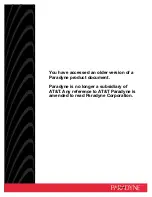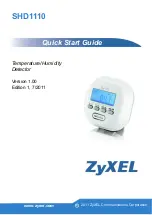
Transition Networks
S4224 Web User Guide
33558 Rev. C
Page 166 of 669
BPDU Guard is provided as part of the STP Configuration advanced global bridge settings. It controls
whether a port explicitly configured as Edge will disable itself upon reception of a BPDU. The port will
enter the error-disabled state, and will be removed from the active topology. It should be noted that
there is also a (CIST) port setting for the BPDU Guard as mentioned above This is not subject to
"Edge" status dependency. The "Restricted Role" CIST port setting also mentioned above could also
be seen as a security measure.
Point-to-Point
Controls whether the port connects to a point-to-point LAN rather than to a shared medium. This can
be automatically determined, or forced either true or false. Transition to the forwarding state is faster
for point-to-point LANs than for shared media.
Forced True
: the port connects to a point-to-point LAN.
Forced False
: the port connects to a shared medium.
Auto
: the selection of whether the port connects to a point-to-point LAN or to a shared medium is
automatically defined. The default is
Auto
.
Buttons
Save
: Click to save changes.
Reset
: Click to undo any changes made locally and revert to previously saved values.
Note
:
If you try to enable STP at the
Configuration >
Spanning Tree
>
CST Ports
menu path while the 802.1X
Admin State
is set to any setting other than ‘Force Authorized’ at
Configuration
>
Security
>
Network
>
NAS
,
the message “
STP Error
- STP port configuration error
” displays.
You can set the 802.1X
Admin State
to a setting other than ‘Force Authorized’ at the
Configuration
>
Security
>
Network
>
NAS
menu path. See “
Configuration > Security > Network > NAS
” on page
more information.
















































